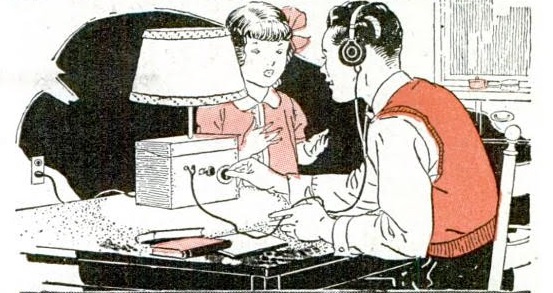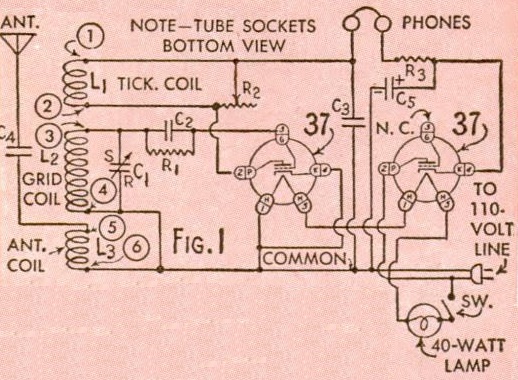Despite wartime parts shortages, the young man shown here was able to furnish his room with a radio, courtesy of plans found in the October 1944 issue of Popular Mechanics.
The lamp is not merely ornamental; it is part of the circuit. The 40-watt bulb serves to drop the line voltage to light the tube filaments. Two tubes are used, either type 37 or 76. The article noted that these tubes could be found in an old set, or in the radio student’s junk box. One served as a rectifier, with the other one serving as regenerative detector. The cabinet is a wooden file box. The lamp socket comes from the dime store and is mounted on a curtain rod secured to a wooden block on the cabinet with glue. The switch on the lamp socket turned on both the lamp and radio.
The coil was wound on a cardboard tube, and wire from an old transformer or filter choke could be used.
The set was billed as a “Desk Lamp DX’er for Boy’s Room.” For best selectivity on local stations, the article recommended an indoor antenna of 15 feet. For pulling in DX, it recommended a long and high outdoor antenna.
The article notes that no external ground is used, but doesn’t explain why not. Since the set is connected directly to the AC wiring, adding an external ground would run a 50/50 chance of blowing a house fuse (or in a modern home, popping a GFI). And anyone planning to make a modern recreation should be aware that the set isn’t exactly safe. One side of the headphones is connected directly to the AC line, and the antenna connection has only one capacitor between it and a hot wire. So the modern parent, before giving one of these interesting sets to Junior to put in his room, would probably be well advised to include an isolation transformer.
Click Here For Today’s Ripley’s Believe It Or Not Cartoon
![]()


